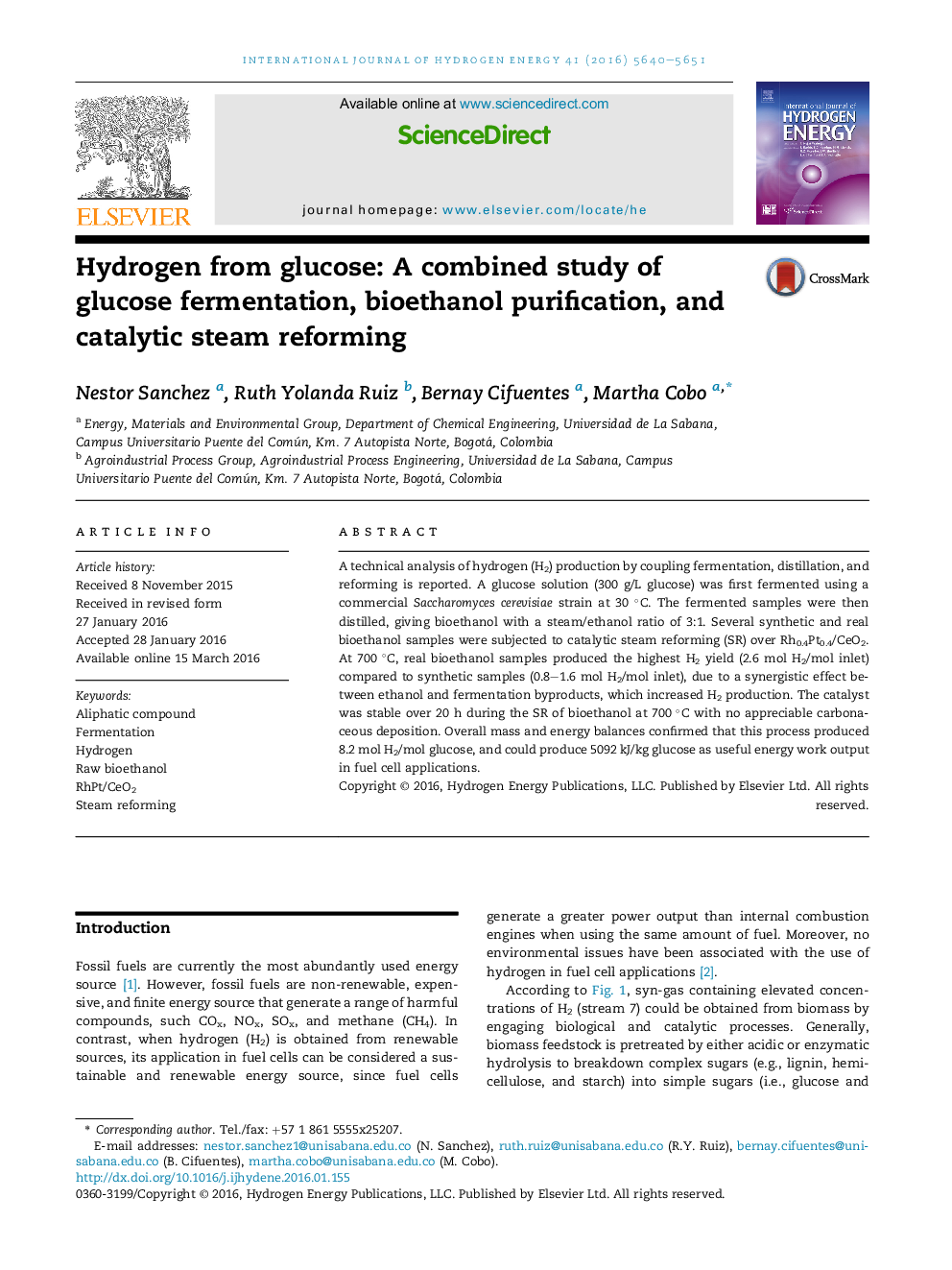| Article ID | Journal | Published Year | Pages | File Type |
|---|---|---|---|---|
| 1277676 | International Journal of Hydrogen Energy | 2016 | 12 Pages |
•Hydrogen from glucose was analyzed in an integrated way.•Fermentation, distillation, and steam reforming were coupled.•Rh0.4Pt0.4/CeO2 was used as catalyst for the bioethanol steam reforming.•Fermentation byproducts increased the H2 yield up to 8.2 mol H2/mol glucose.•5092 kJ/kg glucose can be produced as energy useful output in fuel cells.
A technical analysis of hydrogen (H2) production by coupling fermentation, distillation, and reforming is reported. A glucose solution (300 g/L glucose) was first fermented using a commercial Saccharomyces cerevisiae strain at 30 °C. The fermented samples were then distilled, giving bioethanol with a steam/ethanol ratio of 3:1. Several synthetic and real bioethanol samples were subjected to catalytic steam reforming (SR) over Rh0.4Pt0.4/CeO2. At 700 °C, real bioethanol samples produced the highest H2 yield (2.6 mol H2/mol inlet) compared to synthetic samples (0.8–1.6 mol H2/mol inlet), due to a synergistic effect between ethanol and fermentation byproducts, which increased H2 production. The catalyst was stable over 20 h during the SR of bioethanol at 700 °C with no appreciable carbonaceous deposition. Overall mass and energy balances confirmed that this process produced 8.2 mol H2/mol glucose, and could produce 5092 kJ/kg glucose as useful energy work output in fuel cell applications.
Graphical abstractFigure optionsDownload full-size imageDownload as PowerPoint slide
